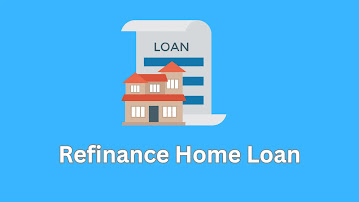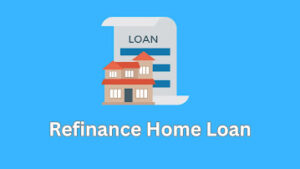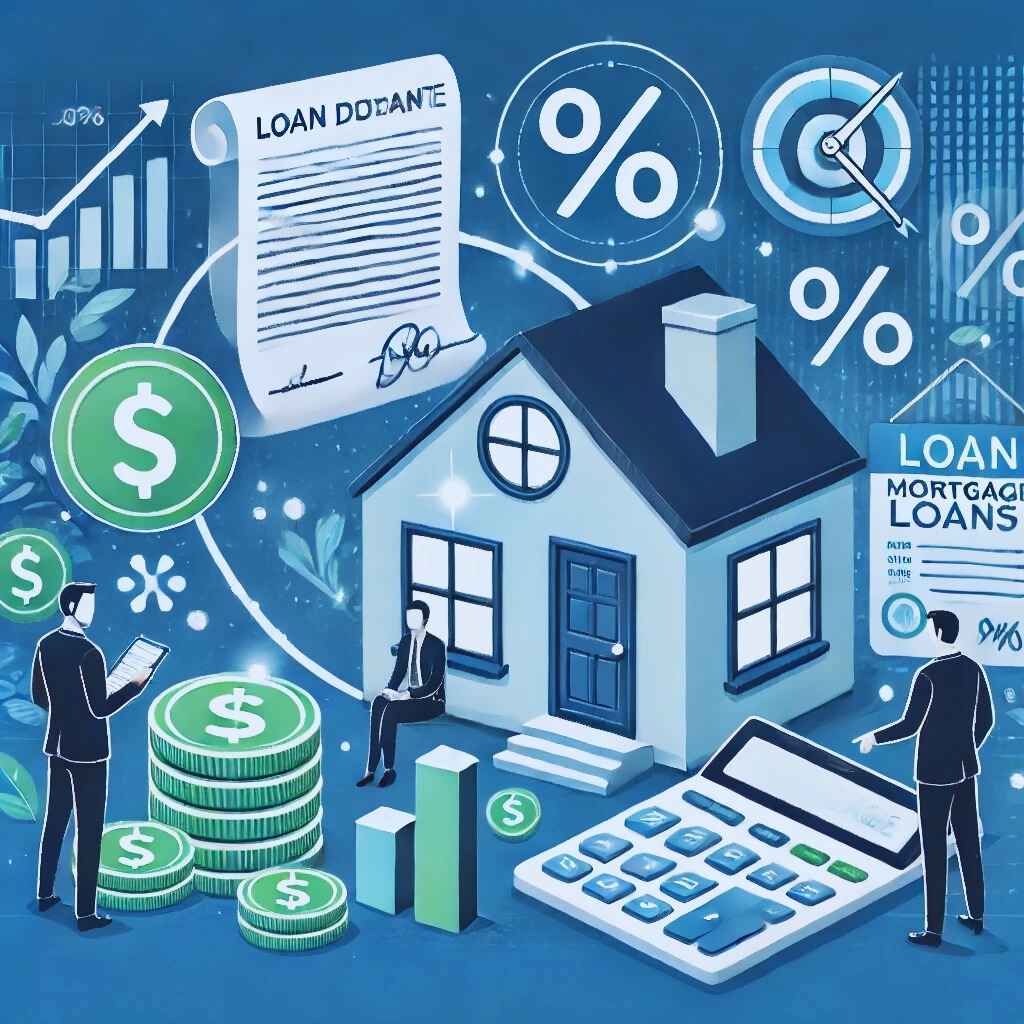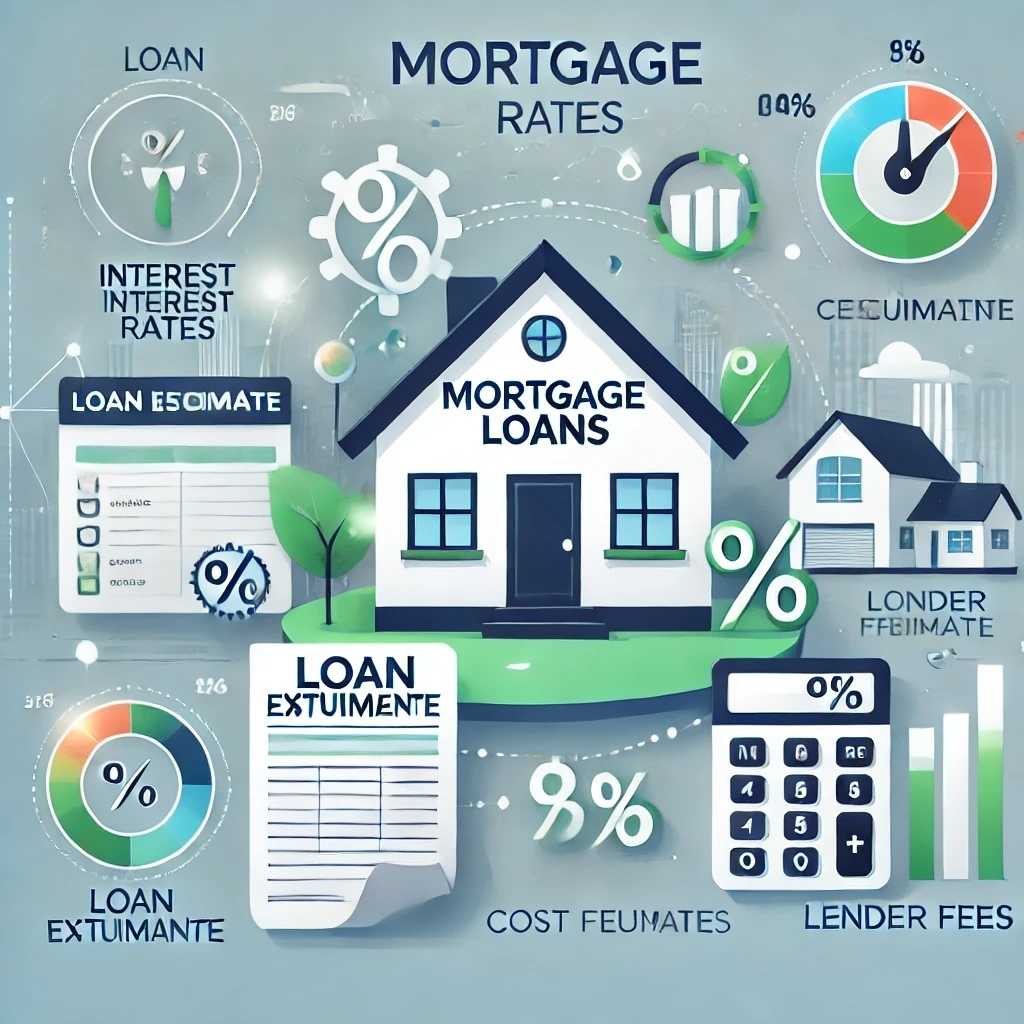Refinance Home Loan: A Comprehensive Guide to Saving Money and Achieving
Financial Goals
In today’s dynamic financial landscape, homeowners are constantly seeking ways
to optimize their finances. One of the most effective strategies is
refinancing a home loan. Whether you’re looking to reduce your monthly
payments, shorten your loan term, or tap into your home equity, refinancing
can be a powerful tool. In this blog, we’ll explore what it means to refinance
a home loan, why homeowners choose to do so, how the process works, and
provide real-world examples to help you make informed decisions.
What Does It Mean to Refinance a Home Loan?
Refinancing a home loan involves replacing your existing mortgage with a new
one. This new loan typically comes with different terms, such as a lower
interest rate, a shorter or longer repayment period, or even a switch from an
adjustable-rate mortgage (ARM) to a fixed-rate mortgage (FRM). The goal is to
improve your financial situation by either reducing costs or aligning the loan
with your current needs.
For example, imagine you purchased a home five years ago with a 30-year
fixed-rate mortgage at 5%. If current market rates have dropped to 3%,
refinancing could allow you to secure a new loan at the lower rate,
potentially saving thousands of dollars over the life of the loan.
Why Do Homeowners Choose to Refinance?
Homeowners refinance for a variety of reasons, each tailored to their unique
financial goals. Below are some of the most common motivations:
1. Lower Interest Rates
The most popular reason for refinancing is to take advantage of lower interest
rates. Even a small reduction in your rate can lead to significant savings
over time. For instance:
Example: Suppose you have a $300,000 mortgage at 5% interest. Your
monthly payment would be approximately $1,610. If you refinance at 3%, your
monthly payment drops to around $1,265—a savings of $345 per month.
2. Shorten the Loan Term
Some homeowners opt to refinance to shorten their loan term, such as moving
from a 30-year mortgage to a 15-year mortgage. While this may increase monthly
payments slightly, it allows you to pay off your home faster and save on total
interest paid.
Example: Refinancing a $300,000 balance from a 30-year term to a
15-year term at the same 3% rate reduces the total interest paid from $179,000
to just $67,800.
3. Switch Mortgage Types
If you currently have an adjustable-rate mortgage (ARM), you might consider
refinancing to a fixed-rate mortgage to lock in a stable interest rate.
Conversely, if you expect interest rates to drop further, switching from a
fixed-rate to an ARM could also make sense.
4. Cash-Out Refinancing
This option allows homeowners to borrow against their home equity. By
refinancing for more than the remaining balance, you receive the difference in
cash. This money can be used for home improvements, debt consolidation,
education expenses, or other major purchases.
Example: If your home is worth $500,000 and you owe $300,000, you could
refinance for $400,000 and pocket $100,000 in cash.
5. Remove Private Mortgage Insurance (PMI)
If your original loan required PMI because you put down less than 20%,
refinancing after building sufficient equity (typically 20%) can eliminate
this additional cost.
6. Consolidate Debt
Refinancing can also serve as a debt management tool. By rolling high-interest
debts like credit cards or personal loans into your mortgage, you can
consolidate them into a single, lower-interest payment.
How Does the Refinancing Process Work?
Refinancing involves several steps, similar to obtaining your initial
mortgage. Here’s a breakdown of the process:
Step 1: Assess Your Financial Situation
Before starting, evaluate whether refinancing makes sense for you. Consider
factors like your credit score, current interest rates, and how long you plan
to stay in the home. Use online calculators to estimate potential savings.
Step 2: Shop Around for Lenders
Compare offers from multiple lenders to find the best terms. Pay attention not
only to the interest rate but also to closing costs and fees, which can vary
widely.
Step 3: Apply for Pre-Approval
Submit an application to your chosen lender(s). They will review your
financial information, including income, credit history, and property value.
Step 4: Undergo Appraisal
The lender will order an appraisal to determine your home’s current market
value. This ensures that the loan amount does not exceed the property’s worth.
Step 5: Close the Loan
Once approved, you’ll attend a closing meeting to sign the necessary
documents. At this point, you’ll pay any applicable closing costs, which
typically range from 2% to 6% of the loan amount.
Step 6: Begin Making Payments
After closing, your old mortgage is paid off, and you start making payments on
the new loan.
Real-Time Data and Trends in Home Loan Refinancing
As of late 2023, the housing market continues to experience fluctuations due
to economic conditions, inflation, and Federal Reserve policies. According to
Freddie Mac, the average 30-year fixed mortgage rate has hovered between 6%
and 7% in recent months, up from historic lows seen during the pandemic.
Despite these increases, many homeowners who secured loans at higher rates in
previous years still stand to benefit from refinancing.
Additionally, rising home values have boosted equity levels, making cash-out
refinancing increasingly attractive. However, stricter lending standards and
higher interest rates mean borrowers need strong credit profiles to qualify
for favorable terms.
Pros and Cons of Refinancing
Like any financial decision, refinancing has its advantages and disadvantages.
Let’s examine both sides:
Pros:
Lower Monthly Payments: Reducing your interest rate directly lowers
your monthly obligation.
Interest Savings: Over the life of the loan, a lower rate translates to
substantial savings.
Flexibility: You can adjust your loan term or type to better suit your
needs.
Access to Equity: Cash-out refinancing provides funds for important
projects or emergencies.
Cons:
Closing Costs: These upfront fees can add up quickly and offset
potential savings.
Extended Loan Terms: Extending your loan term may result in paying more
interest overall, even if monthly payments decrease.
Qualification Challenges: Not all borrowers will meet the stringent
requirements set by lenders.
Market Risks: If interest rates rise after refinancing, you might miss
out on future opportunities to lock in even lower rates.
Frequently Asked Questions (Q&A)
Q1: When is the right time to refinance my home loan?
A: The ideal time to refinance depends on your individual
circumstances. Generally, it’s beneficial when interest rates are
significantly lower than your current rate, or when you want to change your
loan structure (e.g., shorten the term or access equity). Additionally, ensure
you’ll stay in the home long enough to recoup the closing costs through
savings.
Q2: Can I refinance if I have bad credit?
A: While having excellent credit improves your chances of securing
favorable terms, some lenders offer refinancing options for borrowers with
lower scores. Be prepared for higher interest rates and stricter eligibility
criteria.
Q3: How much does it cost to refinance?
A: Closing costs typically range from 2% to 6% of the loan amount. For
a $300,000 mortgage, this equates to $6,000 to $18,000. Some lenders offer
“no-cost” refinancing, where they cover the fees in exchange for a slightly
higher interest rate.
Q4: Will refinancing affect my credit score?
A: Yes, but usually minimally. Applying for refinancing triggers a hard
inquiry on your credit report, which can temporarily lower your score.
However, consistent on-time payments on the new loan can help rebuild your
credit over time.
Q5: Is there a limit to how often I can refinance?
A: There’s no legal limit, but frequent refinancing can raise red flags
with lenders. Additionally, excessive refinancing can erode your equity and
lead to higher long-term costs.
Conclusion
Refinancing a home loan can be a smart financial move under the right
circumstances. Whether you’re aiming to reduce monthly payments, shorten your
loan term, or leverage your home equity, understanding the process and
weighing the pros and cons is crucial. With careful planning and research,
refinancing can help you achieve your financial goals while maximizing your
investment in your home.
If you’re considering refinancing, now is the perfect time to assess your
options. Reach out to trusted lenders, crunch the numbers, and determine
whether refinancing aligns with your long-term plans. Remember, every
homeowner’s situation is unique, so tailor your approach accordingly.



